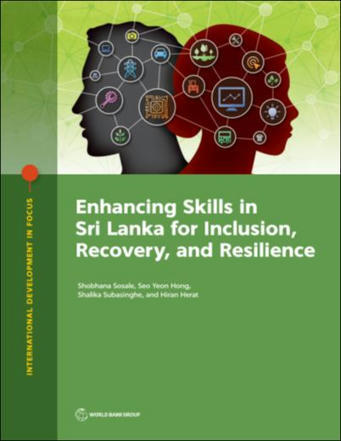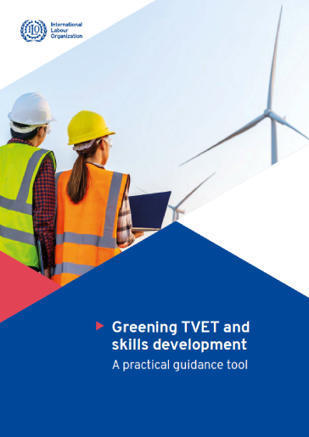 Your new post is loading...
 Your new post is loading...
Generative AI (GAI) has quickly gained a significant foothold in academia, and is now used widely for teaching, learning, and research purposes.[1] While national trends in student and faculty adoption are unclear, surveys conducted by individual institutions have found that approximately 50 percent to 65 percent of both students and faculty have used ChatGPT or one of its commercial competitors.[2] If current trends continue, in the near future GAI use will be ubiquitous, fully integrated into the core mission of colleges and universities.
Understanding the value of individual products in a now-crowded marketplace is a major challenge for end users and for university CIOs, IT departments, and others involved in decision-making.
While the full effects of this transformation are, at best, clear only in outline, 2023 saw both well-established vendors and start-ups racing to bring GAI applications optimized for use in educational contexts to market. As we write this brief, new products are appearing so rapidly that just keeping up with them is difficult, and understanding the value of individual products in a now-crowded marketplace is a major challenge for end users and for university CIOs, IT departments, and others involved in decision making about which products will be supported and/or licensed for campus users.
Since last fall, Ithaka S+R has been partnering with 19 colleges and universities from the US and Canada to assess GAI’s impact on higher education and make evidence-based, proactive decisions about how to manage the far-ranging effects of GAI.[3] As part of this project, Ithaka S+R has been cataloging GAI applications geared towards teaching, learning, and research in the higher education context. Today, we are excited to make our Product Tracking tool (https://sr.ithaka.org/our-work/generative-ai-product-tracker/) publicly available.
The Product Tracker includes a basic description of each tool, as well as information about the pricing model, key features, and other relevant details such as the large language model (LLM) or datasets behind the tool or background on the vendor. As it would be impossible to track every GAI application that might conceivably be used in higher education contexts, we have limited the Tracker to a) products marketed specifically towards faculty or student use, and b) products that appear to be in active use in teaching, learning, or research activities. At present, the Product Tracker contains data on over 100 GAI tools and applications. While we make no claims to including every relevant or potentially relevant product, the Tracker includes data on the most visible individual products on the market and is comprehensive enough to provide a landscape perspective on the market itself. The Tracker is also a living document which we update regularly to include new products or add new data about existing products. We will continue to do so for at least the remainder of 2024 if the tool retains value to the community.
This issue brief is designed to enrich the descriptive data captured in the Product Tracker. In the brief’s first section, we provide a typology of existing products and value propositions. In the second, we offer observations about what the product landscape suggests about the future of teaching, learning, and research practices, and speculations on the near-term future of the academic GAI market.
According to the National Institute of Statistics and Census (INEC), in Ecuador, 26 percent of women and 11 percent of men between the ages of 15 and 24 are neither working nor in school (the so-called “NiNis”).
Nineteen-year-old Diana Tates, who graduated from high school in 2020, is a “NiNi.” When the economic crisis triggered by the pandemic hit, she had to drop out of university because she could not afford the tuition fees. She decided instead to take care of her younger siblings because she believed that she would not be able to get a job without a degree.
For young people like Diana, technical education offers a powerful educational alternative, because they can acquire practical knowledge in a short time and have easier access to the labor market, thus paving the way for the development of a high-quality labor force in the region.
A World Bank report has shown that academic and labor market outcomes of short-cycle programs help generate employment and develop skilled human capital to meet the demand for these skills in a short amount of time and at a lower cost per student.
Three advantages of technical institutes:
Their students graduate at higher rates than students in university degree programs
Their graduates earn more than persons who only have a high school diploma or who have not completed a university degree.
The unemployment rate is lower among their graduates.
In this context, technical degree programs, which typically last two or three years and are oriented to the labor market, could be extremely helpful in generating employment by offering a path to fairly quick, well-paying job opportunities.
Are short-cycle programs a solution to the crisis?
Given the potential of technical and technological careers, there is an urgent need to provide young people with access to high-quality, short-cycle education programs. To that end, in 2016, the Ministry of Higher Education, Science, Technology, and Innovation (SENESCYT) and the World Bank launched a US$52 million project to improve the infrastructure of public technical and technological institutes and enhance the importance of their programs for the productive sector.
The project provided infrastructure and equipment for four technical and technology institutes and enhanced the quality of their academic programs. One of the project’s activities was the construction in the city of Machala of the Instituto Tecnológico Ismael Pérez Pazmiño, a technology institute that can accommodate over 2,800 students. The institute is the most modern in the country, with 18 laboratories, two workshops, 32 classrooms, and a library, and is staffed by 130 faculty who provide instruction in more than 10 technical degree programs.
Like the students in Machala, the students at the Yavirak Institute in Quito are also undergoing an educational transformation. The rehabilitation of the institute’s infrastructure, which included the construction and equipping of a building for the Ecuadorean culinary arts program, led to a 90 percent increase in enrollment.
For Adrián Calle, a student, this has been a game changer:
“In my first semester, we were in a classroom that was not a kitchen: it was an office with a bathroom and there was no refrigeration for food ... But now we are in the new workshops where we can innovate, modifying or preserving traditional Ecuadorean flavors... I feel lucky to have had the opportunity to study in these facilities.”
A mix of new and renovated institutes
The project also financed the renovation of the Instituto Tecnológico Luis Arboleda Martínez in the port city of Manta. With a view to improving the quality of education, we worked closely with the private sector to align educational curricula so that they can better meet the demand for technical skills and discuss the equipment needed to develop those skills that will help strengthen port operations.
In the area of quality, the project included activities such as the implementation of a computer-assisted mathematics remediation program, access to the internet in all institutes in the country, testing of cross-cutting skills for students and teachers, the development of an Integrated Academic Management System, and the rollout of virtual reality laboratories in six institutes in the areas of engine repair and industrial risks.
The educational transformation spurred by these initiatives must be sustainable over the long term. To that end, the ongoing coordination work between the productive sector and the technical institutes, and the leadership work being done by the directors of these institutes will be essential to ensure that institutional management practices will translate into improved learning in the classroom. The commitment of the government, the institute, and the student community to maintain the infrastructure and equipment will be fundamental to ensure sustainability.
Ultimately, the quality of the teachers and a focus on their continuing education will ensure that students acquire the skills they need to contribute to local economies. This will provide the foundation for a structural change, not only of the education system but also, in the dynamics of social mobility of the most disadvantaged youth.
The Times Higher Education World University Rankings 2024 include 1,906 universities across 108 countries and regions.
The table is based on our new WUR 3.0 methodology, which includes 18 carefully calibrated performance indicators that measure an institution’s performance across five areas: teaching, research environment, research quality, industry, and international outlook.
This year’s ranking analysed more than 134 million citations across 16.5 million research publications and included survey responses from 68,402 scholars globally. Overall, we collected 411,789 datapoints from more than 2,673 institutions that submitted data.
Trusted worldwide by students, teachers, governments and industry experts, the 2024 league table reveals how the global higher education landscape is shifting.
View the World University Rankings 2024 methodology
The University of Oxford tops the ranking for the eighth year in a row, but others in the top five have seen shifts in their ranks. Stanford University moves up to second place, pushing Harvard University down to fourth.
The Massachusetts Institute of Technology (MIT) climbs up two places to third this year. The University of Cambridge slips to fifth place, after being in joint third place last year.
The highest new entry is Italy’s Catholic University of the Sacred Heart, ranked in the 301-350 bracket. However, the majority of the institutions joining the ranking for the first time this year are in Asia.
The US is the most-represented country overall, with 169 institutions, and also the most-represented in the top 200 (56). With 91 institutions, India is now the fourth most-represented nation, overtaking China (86).
Four countries enter the ranking for the first time – all of them in Europe. The addition of Kosovo, Bosnia and Herzegovina, North Macedonia and Armenia is in contrast to last year’s trend when all the new entrants were from Africa.
Stanford University leads the teaching pillar, while the universities of Oxford and Cambridge come top for research environment. The research quality pillar, which is the newly renamed citations pillar, sees MIT in first place.
The University of Sharjah in the United Arab Emirates scores highest in international outlook, while 28 institutions receive a top score of 100 for the industry pillar.
In addition to the 1,904 ranked institutions, a further 769 universities are listed with “reporter” status, meaning that they provided data but did not meet our eligibility criteria to receive a rank, and agreed to be displayed as a reporter in the final table.
L&D powers the AI future
The AI era is here, and leaders across learning and talent development have a new mandate: help people and organizations rise to opportunity with speed and impact.
As AI reshapes how people learn, work, and chart their careers, L&D sits at the center of organizational agility, delivering business innovation and critical skills.
This report combines survey results, LinkedIn behavioral data, and
wisdom from L&D pros around the globe to help you rewrite your
playbook for the future of work.
The latest wave of AI tools like ChatGPT seem certain to disrupt the workplace in the years ahead — and the most-disrupted professions may be ones that require college degrees. That presents an unprecedented challenge for colleges already struggling to prove their value.
The purpose of this paper is to highlight the particularitie continuing training models in France and Denmark in order to examine their differences and similarities. This comparison will underscore how the incumbent systems reflect the positioning and dialogue between ds ofomestic public policies, labour market stakeholders, vocational training institutions, the unions and employers’federations.
For schools with a long history of providing Continuing Education, the CE departments can serve as hubs for experimentation and innovation in different learning modalities and formats, approaches to teaching and meeting students where they are.
Higher education is known for sticking to traditional processes, but that doesn’t mean all institutions follow suit. For some, innovation and change have occurred in Continuing Ed divisions for decades. As the modern learner seeks out higher education through multiple stages of their lives, it’s critical for the institution to have the right teaching approaches and services in place to respond successfully. In this interview, Tanya Zlateva discusses marketing lifelong learning to the modern learner, how Continuing Ed units can drive the institution to innovative change and the evolution of lifelong learning.
In this paper, the perspective of international vocational education and training (VET) providers on the issue of transfer from Germany as a origin country to a specific target country is considered. The existing state of research on the topic of VET transfer has so far been largely located at the macro level. Still, to develop a better understanding of transfer, it is useful to include individual projects on a programme basis in the analysis as their understanding in turn shapes the entire transfer work. The study aims to identify the understanding of transfer of vocational training service providers in internationalisation projects, as well as different types of transfer. Case studies are applied that involve German VET providers, sampled from a German funding line. Based on qualitative and quantitative data, process documents and previous research, in-depth interviews with six project actors are conducted to identify the perspectives and approaches for transfer. Among other theoretical approaches, Dolowitz and Marsh's policy transfer framework and Gessler's levels of transfer form the theoretical framework of the study. In the context of the present study, different understandings of transfer can be attributed. Furthermore, using type-building content analysis, four ideal transfer types, namely imitative Re-Combination, adaptative Specialization, adaptative Re-Combination and transformative Specialization are classified. The transfer itself is determined by the project activity rather than by a pre-determined understanding of transfer on the part of the internationally active VET provider. In turn, the project activity shapes the type of transfer in combination with the project partners in the target country context. The project actors focus on structures and content; the transfer of practices and processes is largely understood implicitly and thus less directly forced.
Reflecting on AI and learning, a student offers four insights gleaned from firsthand interactions with ChatGPT.
Ethical issues in Educational Technology have been scarcely considered in the literature so far and only recently raised more attention. Considering Educational Technology as a research area and an ethical practice, this qualitative study aimed at exploring which and how ethical aspects are considered in Educational Technology training. Semi-structured interviews were conducted with eight university instructors in education departments with expertise in Educational Technology and/or Distance Education Quebec higher education institutions. The results show that that there are topics clearly more present than others, but some were clearly considered relevant to address in Educational Technology training offerings despite not being so right now. Others are still quite new. Spotlighting practitioners' perspectives about these issues an important contribution of the study.
Looking to implement microlearning but not sure where to start? Or do you need some help identifying a microlearning use case that will enhance your existing training programs? Either way, we have great news: when it comes to microlearning, the possibilities are nearly endless.
This guide shares nine of the top ways organizations are leveraging this science-backed practice to train and develop high-performing employees. From the primary use cases of knowledge reinforcement and assessments to boosting employee engagement and tracking performance, you’ll learn practical strategies you can implement right away to improve training effectiveness!
On 24 January – International Education Day, which this year had a theme of ‘learning for lasting peace’ – the UN said in a joint statement that learning had been “devastated” in the “catastrophic conditions” of war in the Gaza strip.
“Education is a fundamental human right and critical lifeline for the millions of children and young people affected by the war, and it must be sustained even throughout this crisis. Ending the conflict is imperative to enable Palestinian students and educators to begin to rebuild the foundations for a safe return to learning.”
But when asked by NPR how the destruction of universities will affect how young people in Gaza think, Al-Israa University’s Vice President Ahmed Alhussaina said: “This generation, let’s call it Z Generation, since 2000, they haven’t seen nothing but wars on Gaza. They were trying to live, trying to, you know, let things go. But God knows what their psychology is [now], their emotion. I think 99% of them need mental health therapy.”
Microcredentials hold promise for connecting people’s skillsets with labour market demand in a rapidly changing world of work. They have proliferated in recent years across economic sectors and education levels, reinforcing European and national efforts to understand and develop them better.
They can increase the provision of labour-market-relevant vocational education and training (VET), supporting national, regional and sectoral upskilling and reskilling strategies, offering learners targeted training for better employment prospects, and helping employers improve employee retention and productivity. They support the modularisation of qualifications and the validation of prior learning, enabling the inclusion of the most vulnerable and lifelong learning at all levels.
|
In today’s job market, adequate skills training is needed to compete for desirable jobs. Without that training, many individuals, particularly those from marginalized communities, can get stuck in a “low pay, no pay” cycle—that is, they frequently move between low-paid work and unemployment. Research has shown that sector-based training programs—which train people for high-quality jobs that align with the labor force needs of employers in targeted industry sectors—can raise individuals’ employment rates and earnings. But sector-based training programs are small and expanding them to a level that meets the economic need of workers has been challenging.
Attacks on education in West and Central Africa have increased in the past 10 years and universities have not been spared, according to the United Nations Educational, Scientific and Cultural Organization, or UNESCO.
Issuing the warning at the end of February in several briefing papers, UNESCO stated that most of the attacks occurred in Burkina Faso, Cameroon, the Democratic Republic of the Congo, Mali, Niger and Nigeria and were perpetrated by armed conflict groups and government armed forces.
In one of the background papers, ‘Safeguarding education: Policy and data landscapes for the protection of education from attack in West and Central Africa’, UNESCO noted that, since 2017, armed Islamist insurgent groups have been targeting the higher education sector in Burkina Faso. Universities that have been forced to suspend classes from time to time include Dori University and the University of Fada N’Gourma.
In Cameroon, armed separatist groups driven by concerns about the marginalisation of the English-speaking north-west and south-west regions of the country have been engaged in a boycott of education since 2017.
The University of Buea and the University of Bamenda, which are located in those areas, have been under attack several times. According to UNESCO, attacks on education in the far north region of Cameroon have also been carried out by Boko Haram, spreading over the border from Nigeria.
Similarly, in the Democratic Republic of the Congo, attacks on education have escalated since 2012, following the outbreak of conflict between the M23 rebel group and the Congolese armed forces, or FARDC, and institutions in the eastern provinces of North Kivu, South Kivu and Ituri have been the most heavily impacted. “Attacks are carried out by the FARDC, M23, Hutu militia groups, the Democratic Forces for the Liberation of Rwanda, and the Allied Democratic Forces,” says UNESCO.
In Mali, schools and universities are also exposed to rebel attacks. Last year, the United Nations reported that about 1,500 out of 9,000 schools in the country were closed or non-functional as a result of insecurity, disrupting the education of half a million learners.
One of the higher education institutions at risk in Mali is the prestigious L’Institut des Hautes Etudes et de Recherches Islamiques Ahmed Baba de Tombouctou (Ahmed Baba Institute of Higher Learning and Islamic Research) in Timbuktu, which is still recovering from a 2012 attack. According to UNESCO, the institute has manuscripts of the history of Mali dating from the 14th and 16th centuries.
A recent study asked students and academics to distinguish between scientific abstracts generated by ChatGPT and those written by humans. Omar Siddique analyses the results What did we find? We discovered that participants were generally quite bad at discerning between AI-generated and human-authored content. With a score just above chance, participants had a 52 per cent success rate at identifying the given abstract correctly. Interestingly, participants with the highest level of researcher experience were the least successful at this task. Undergraduates and ongoing postgraduates had similar scores to each other, and both performed better than completed postgraduates at a statistically significant level. Even more interestingly, participants evaluated AI-generated abstracts to have significantly better textual quality than human-authored abstracts. Our findings, though significant, should be interpreted with caution - our sample size was relatively small, which means it’s difficult to generalise these findings to the rest of the general population. Furthermore, the TES is a newly created scale that has not undergone sufficient psychometric testing to render it a credible measure of linguistic text. Further research is needed to consolidate our findings.
Generative AI, though still an emergent technology, has been in the headlines since OpenAI’s ChatGPT sparked a global frenzy in 2023. The technology has rapidly advanced far beyond its early, human-like capacity to enhance chat functions. It shows extensive promise across a range of use cases, including content creation, translation, image processing, and code writing. Generative AI has the potential not only to reshape key business operations, but also to shift the competitive landscape across most industries.
The technology has already started to affect various business functions, such as product innovation, supply chain logistics, and sales and customer experience. Companies are also beginning to see positive return on investment (ROI) from deployment of generative-AI powered platforms and tools.
While any assessment of the technology’s likely business impact remains more forecast than empirical, it is necessary to look beyond the inevitable hype. To examine enterprises’ technological and business needs for effective implementation of generative AI, 300 senior executives across a range of regions and industries were surveyed. Respondents were asked about the extent of their corporate rollouts, implementation plans, and the barriers to deployment. Combined with insights from an expert interview panel, this global survey sheds light on how companies may or may not be ready to tackle the challenges to effective adoption of generative AI.
Sri Lanka has confronted and is grappling with a number of exogenous shocks, including the devastating 2004 tsunami; the 2008 global recession; the COVID-19 global pandemic; and, more recently, the ongoing “triple crisis” (fuel, food, fiscal). The country is now at a crossroads. An ongoing process of strengthening skills and improving education will be crucial to Sri Lanka’s economic recovery.
Sri Lanka is transitioning from a rural-based to a modern, urbanized economy, and better jobs are being created, especially in services. To remain globally competitive, the Sri Lankan workforce must gain the technical competencies and higher-order cognitive skills that meet the needs of local and foreign labor markets. As a result, Sri Lanka will need to transform its current skills development system and processes to align them to emerging jobs; improve their market relevance; and develop an effective, inclusive, and accessible education and training system for skilling, reskilling, and upskilling the stock and flow of the workforce. "Enhancing Skills in Sri Lanka for Inclusion, Recovery, and Resilience" addresses these urgent issues and provides
recommendations for educators and policy makers.
This paper features the case of NSDC, established as a public private partnership between the Government of India and several industry bodies. 51% of equity in this partnership is held by the private sector (represented through a range of industry associations) and 49% of equity is held by the Government of India. The very structure of this partnership with the private sector as the majority stakeholder, emphasizes the important role given to the private sector within such partnerships. NSDC was explicitly created to catalyse private sector support for skills training. It sought to strengthen India’s skills training ecosystem by expanding the capacity and scale of skills training programmes, enhancing the quality and relevance of training programmes, and improving the employability of youth, through formal sector employment or entrepreneurship.
Companies have recognized that skills-based practices are a powerful solution to challenges that have intensified since the pandemic. Employers have struggled to find the right candidates for important open positions and then keep the talent they hire. Through a skills-based approach, companies can boost the number and quality of applicants who apply to open positions and can assist workers to find more opportunities to advance internally, which can help employers improve retention. It also helps communities by creating more and better job opportunities for a broader, diverse pool of workers.
This policy brief contributes to better understanding of national qualifications frameworks (NQFs) in Europe by providing insights into their main characteristics, scope and coverage, along with a discussion on their impact and the extent to which they are used.
The analysis is based primarily on information from Cedefop’s European inventory of NQFs, which was updated in cooperation with the European Commission, the ETF and the countries participating in the EQF process.
The Canadian Vocational Association is pleased to congratulate Angela Ripley for having successfully completed the CVA DACUM Analysis Facilitator International Certification, therefore demonstrating her ability to coordinate and conduct occupational analyses in compliance with the CVA DACUM quality assurance standards.
Angela is currently a competency-based education and assessment consultant at the Bow Valley College (Calgary, Alberta, Canada). Angela received her PhD in Organizational Psychology in 2019. Since then, she has performed several task analysis in work place reviews, training reviews, and performance outcome reviews. Of notable accomplishments, Angela performed job task analysis for the Delta Police Department in their study “Evaluation of the Use of Force Simulator on Police Training Effectiveness” (2020), Justice Institute of British Columbia Police Academy Training Review (2019), Independent Investigations Office Training Program Review (2019), Metro Transit Police Department Development of Community Safety Officer Training Program (2022), and most recently a full development of the National Occupational Standard: Personal Care Providers (2022).
Angela first attended DACUM Level 1 in 2019 and then helped craft Bow Valley College’s competency-based education model, using a DACUM analysis to develop all new training programs within the College. Angela has facilitated over 10 workshops for staff at Bow Valley College on the process, and development of competency-based education programs. She has also developed over 10 competency profiles in various industries using the DACUM principles to develop training programs.
Angela is looking forward to promoting DACUM and to using this model at every opportunity. Meet more DACUM Experts here For more information on DACUM : here
KEY INSIGHT #1
Supporting employers in overcoming structural barriers to training investment is key to addressing labour and skill shortages.
KEY INSIGHT #2
Ensuring that employers are actively engaged throughout the lifecycle of skills delivery projects, from inception to roll-out to evaluation, is central to the success of any training endeavor.
KEY INSIGHT #3
Well-resourced and trusted intermediary organizations that coordinate efforts among stakeholders can help alleviate employer capacity constraints, especially for SMEs, and improve program design.
As an organization striving to make labour market information (LMI) accessible to all Canadians, our team at the Labour Market Information Council (LMIC) recognized early on the importance of career development professionals and their role in labour markets across the country.
The Pan-Canadian Competency Framework for Career Development Professionals details the skills, knowledge and actions that effective career development professionals, career influencers, career educators, and thought leaders demonstrate. These professionals “help individuals manage learning and employment, acquire and enhance skills, seek and create employment, and access community services that support personal and professional growth in an increasingly complex, interdependent and changing world.”
Career development professionals provide diverse services to their clients, including assessing job readiness, guiding career decision-making, suggesting opportunities for skill enhancement, offering advice about job maintenance, and facilitating conversations about career growth.1 The scope of their work is comprehensive. Its nature is as varied as the client profiles that career development professionals engage with daily.
Career development professionals are important brokers of LMI. However, there are knowledge gaps about how to best serve this group in Canada:
Where are career development organizations located?
What range of services do they offer?
How do they use, understand and integrate LMI and data sources into the programs on offer?
As a result, LMIC engaged Goss Gilroy Inc. to carry out a pilot study to answer these questions and gain a deeper understanding of the landscape within which career development professionals operate.
This report shares insights that emerged from this study. By beginning to understand LMI use by career development professionals, LMIC and partners in the LMI landscape can work to address the needs of these employment specialists. As a result, they will be better equipped to serve all people in Canada.
The ILO developed "Greening TVET and skills development: A practical guidance tool” to support TVET stakeholders to mainstream skills for the green transition in TVET and skills development in a systemic and holistic manner. The tool provides “how-to” guidance on designing competency standards and curricula for greener jobs, adapting training delivery and assessments to support greener learning, adapting practices to maintain a greener campus, capacitating teachers and trainers, and sensitizing enterprises.
The guidance tool takes into account countries at different levels of economic development and has been designed to support countries in taking stock of achievements in respect of greening TVET and skills development and focusing on areas where improvements are still needed. It will contribute to a better understanding of how to design, implement, monitor and evaluate the greening TVET agenda in all country contexts, with a view to transforming TVET practices and training and so equipping the current and future workforce with relevant skills for a green, just and inclusive transition.
|



 Your new post is loading...
Your new post is loading...
























